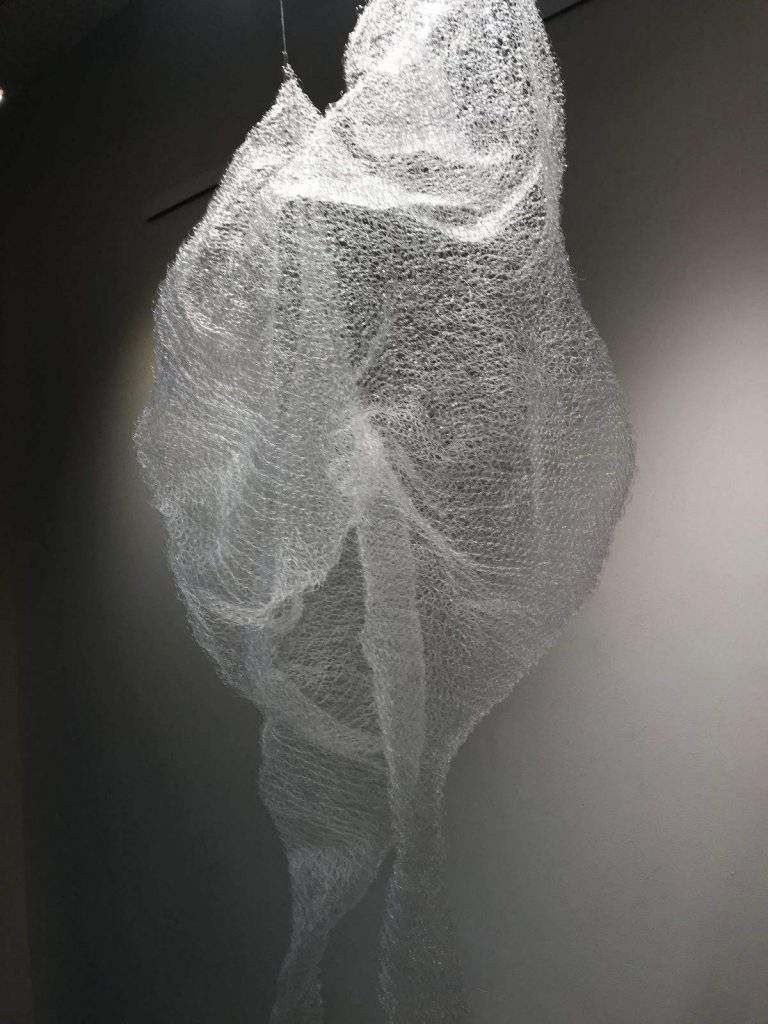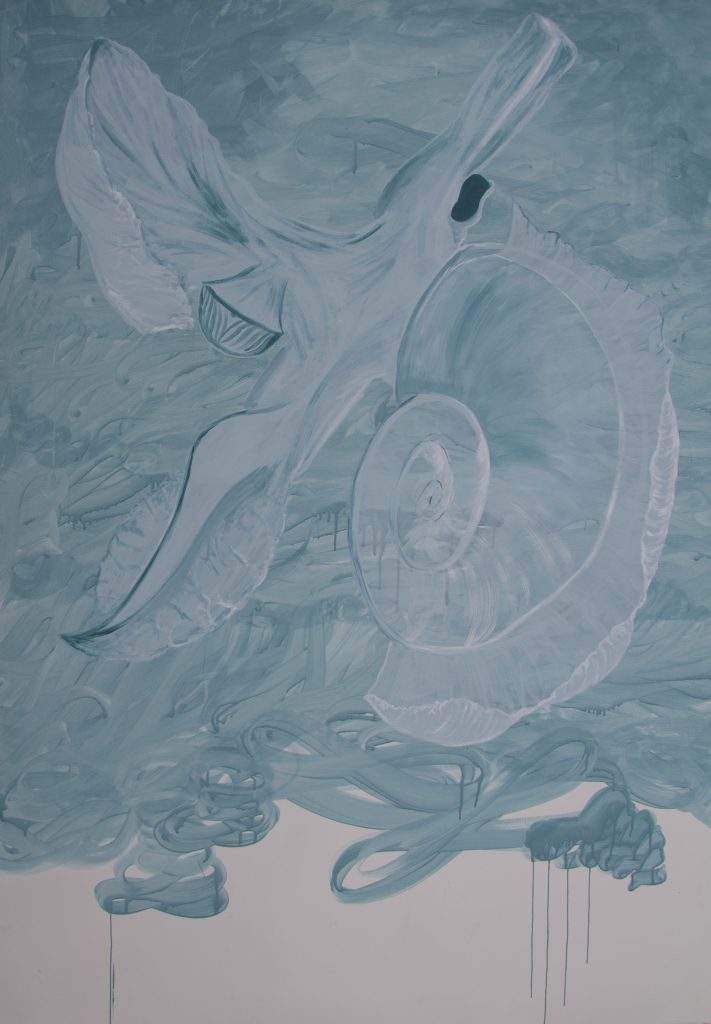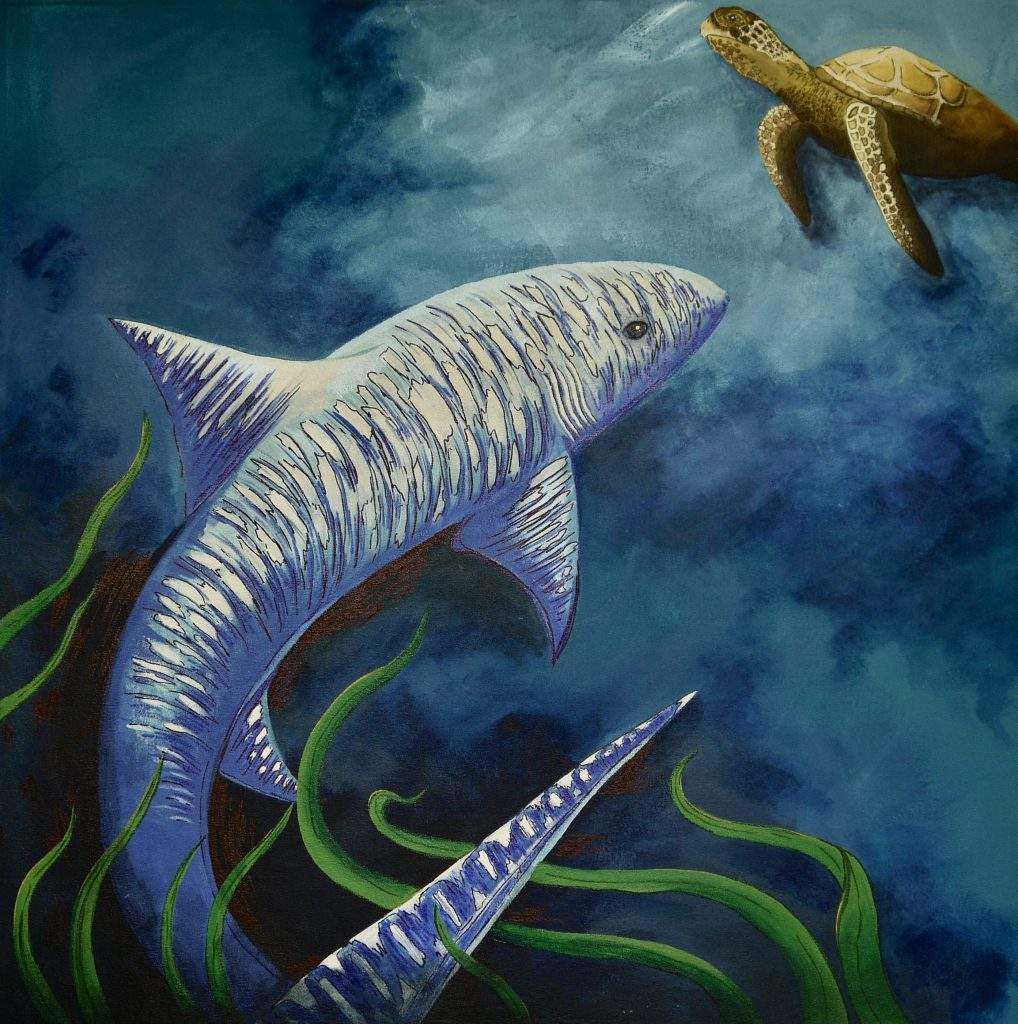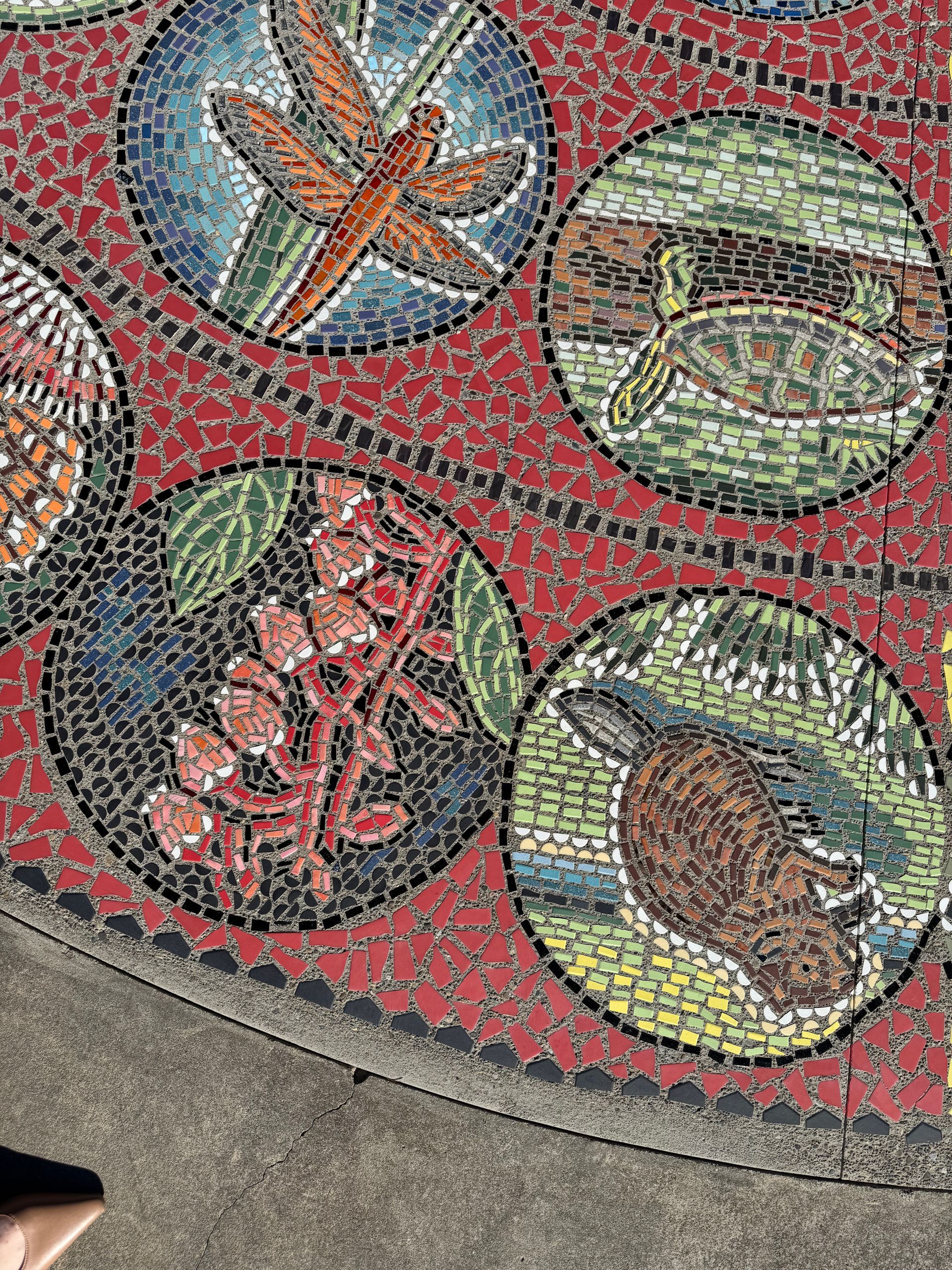Second in the Chessman’s ecology series, “Vulnerable Predators” is an exhibit that explores Apex Predators by painter and installation artist Tara Pierce, Zoology and photography student at OSU, William Schweinfurth, artist working with marine biologists, Samm Newton and installation artist and arts programmer at Chehalem Cultural Center, Carissa Smith-Burkett.

Along with acrylic paintings, photographs and drawings, this exhibit features an unusual array of materials such as woven fishing line and by-caught salmon shark fin sculptures procured with the help of the Hatfield Science Center.
“Vulnerable Predators” is an art exhibit with a passionate purpose to deliver a vital message. It challenges viewers to think about the importance of APEX Predators in our oceans, such as Shark, Killer Whales and even creatures so small that you would never guess that they’re predators.
The state of the ocean environment is changing dramatically. This, hand in hand with irresponsible fishing practices, has caused a major decline in these important predators.
Will Schweinfurth talks about his work entitled, “ Fins for Sale”:
Over 70-100 million sharks are killed a year in the shark finning industry, causing an increasing concern of shark extinction. As apex predators, sharks influence the population and behaviors of other marine animals. This makes them crucial to all ocean ecosystems, without them there would be an imbalance among lower tier predators and prey. For example, the presence of Tiger Sharks in Hawaii keeps the Sea Turtle population from over-gazing sea grass floors.
The question is, how does one explain and bring awareness to such a complicated subject through art?”

William Schweinfurth was born in Portland, Oregon in 1997. Developing a love for photography in high school, he went on to Oregon State University where one term in, switched from zoology to photography, hoping to merge his love for the nature world with art. Fins for Sale was made in Schweinfurth’s final year at Oregon State, with the help of the Hatfield Marine Science Center, and professor Kerry Skarbakka, made from real shark fins from a by-caught salmon shark, submerged in isopropyl alcohol in custom made Poly-Carbonate boxes. Aimed at provoking conversation over the disgusting tradition of shark finning and the dwindling shark populations in our oceans, Schweinfurth’s goal is to upset his audience enough to raise awareness of these acts.
Tara Pierce explores the relationships of apex predators through her acrylic paintings on canvas. Sharks are critical to each ecosystem they inhabit and are potentially one of the world’s most misunderstood animals. Orca Whale species around the globe are all handling the warming waters differently. Also an apex predator, Orca populations and altered territories signal massive ecological shifts.
Tara’s Bachelor’s thesis combined her studio practice with marine biology. Scientific studies and biological events informed her work as she sought to create hopeful images about otherwise dire topics. The media bombards us daily with grim environmental news and implies that unless we overhaul our lifestyles and are consistently perfect, we are all going to kill the planet. This sensationalism does not promote conversation or discussion of potential solutions; it promotes only a feeling of defeat. For this reason, Tara chose to create inviting images. This is an experimental approach to starting the conversation anew.
Through her readings, she has found there is reason for hope. Humanity has come together across borders, oceans, and cultures, to create international laws that solve environmental problems via prevention, protection, and remedying mistakes. These paintings are about those mistakes, but also about the successful solutions we put forth and adhere to, to this day.
Samm Newton developed this work over the past two years working with marine ecologists from the Bermuda Institute of Ocean Science and fluid mechanics engineers from the University of South Florida. These series of visual works created alongside Dr. Amy Maas and Dr. David Murphy interrogate Cliones, a genus of pteropods, and Heteropods. The tiny marine snails swim through pelagic ecosystems with modified wings earning them several names including sea butterflies and sea angels. While the scientists and engineers study the ecology and physiology of pteropods, these paintings experiment with how we know the ocean and handle vulnerable beings in the natural world. It is meant to spark curiosity, and to generate further questions, not answer them. Unfortunately, these tiny whimsical predators, which range in size from a few millimeters to one or two centimeters, are impacted by changing ocean chemistry. The main prey of Heteropods—and Cliones even though they don’t have shells themselves—are other pteropods with calcium carbonate shells. Changing ocean conditions may also interrupt the internal processes of these predatory snails.

Carissa Smith-Burkett is a three-dimensional narrative maker. She enjoys repetitive, additive processes when she makes sculptural objects. She is a classically trained vocalist and enjoys singing jazz standards. Smith-Burkett is the Curator and Arts Program Manager at the Chehalem Cultural Center in Newberg OR and serves on the Board of Directors for Public Annex, a non-profit organization in Portland OR that provides Urban Farm and Art Programming to adults all along the ability spectrum. She received a BA in studio art with a focus in sculptural practices at Azusa Pacific University and an MFA in visual art from Vermont College of Fine Art.
The Sea Jellies series are crocheted out of fishing line creating a net-like finish that considers the human impact on marine life. The transparent material of the fishing line mimics the fascinating flesh of these umbrella-shaped marine animals. These alluring creatures with their soft, flowing tentacles and bioluminescent colors can cause serious injury and even death.
For more information about this show or any of the many events going on at the Lincoln City Cultural Center, call 541-994-9994, head to lincolncity-culturalcenter.org, or become a friend on Facebook.
The Lincoln City Cultural Center is at 540 NE Hwy. 101, Lincoln City, OR.
*****



